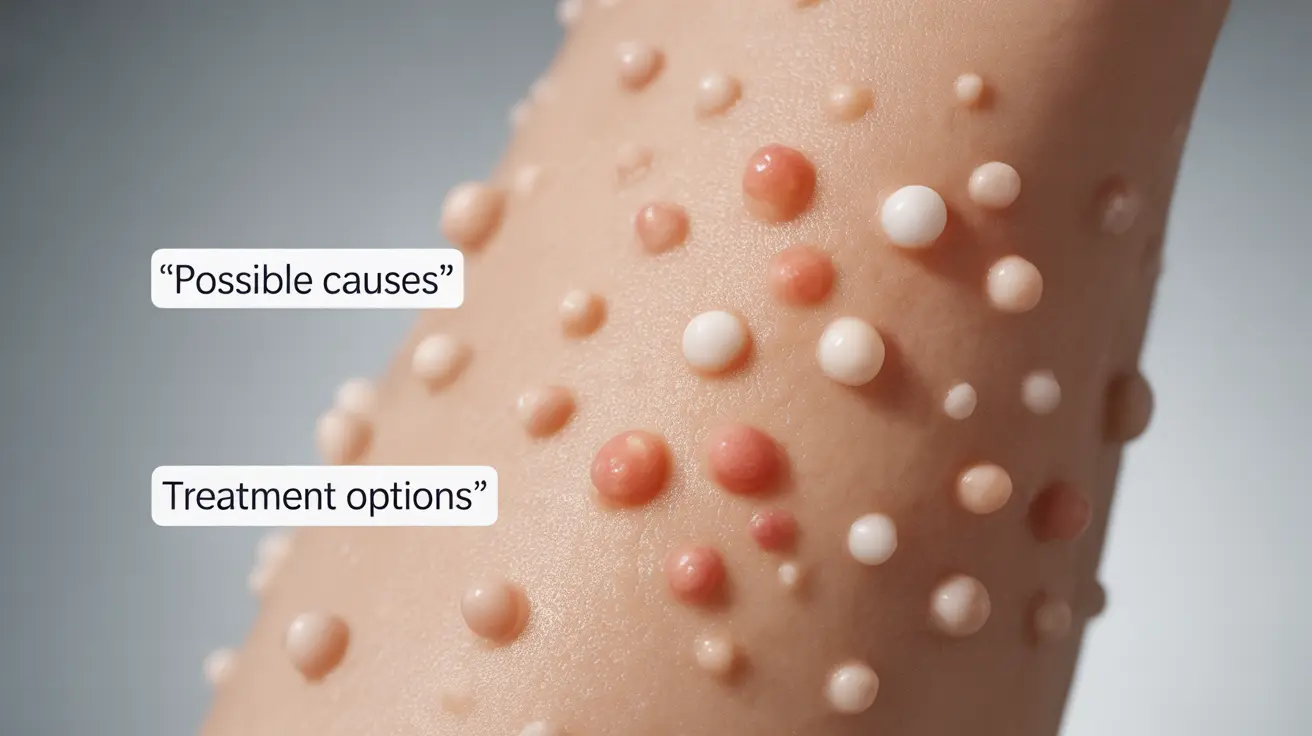Finding a pimple on the scrotum can be concerning, but it's typically a common and benign occurrence. These small bumps can develop for various reasons, from basic hygiene issues to more specific skin conditions. Understanding the causes and proper treatment approaches can help you manage this condition effectively and know when to seek medical attention.
While scrotal pimples are usually harmless, it's important to learn how to identify them correctly and understand the best ways to treat and prevent them. This comprehensive guide will help you navigate this sensitive health topic with confidence.
Understanding Scrotal Pimples
Scrotal pimples typically appear as small, raised bumps that may be red or white in color. They can occur individually or in clusters and might be accompanied by mild discomfort or itching. These bumps are often similar to the pimples that appear elsewhere on the body, usually resulting from clogged hair follicles or oil glands.
Common Causes of Scrotal Pimples
Several factors can contribute to the development of pimples on the scrotum:
- Folliculitis (inflamed hair follicles)
- Excessive sweating
- Poor hygiene
- Friction from tight clothing
- Ingrown hairs from shaving
- Blocked sebaceous glands
- Heat and humidity
Safe Home Treatment Options
When dealing with pimples on the scrotum, gentle treatment approaches are essential:
- Keep the area clean with mild soap and warm water
- Wear breathable, cotton underwear
- Apply warm compresses to reduce inflammation
- Avoid squeezing or popping the pimples
- Use over-the-counter antibacterial soap if recommended by a healthcare provider
Prevention Strategies
Taking proactive steps can help prevent scrotal pimples from developing:
Proper Hygiene Practices
Maintain good personal hygiene by washing the area daily with gentle, unscented soap and warm water. Pat the area dry thoroughly after washing to prevent moisture buildup.
Clothing Choices
Choose loose-fitting, breathable underwear and avoid synthetic materials that can trap heat and moisture. Change clothes promptly after sweating heavily.
Safe Grooming Practices
If you choose to remove pubic hair, use proper shaving techniques or consider alternative hair removal methods. Always use clean, sharp razors and appropriate shaving products.
When to Seek Medical Attention
While most scrotal pimples are harmless, certain symptoms warrant medical evaluation:
- Severe pain or discomfort
- Spreading redness or inflammation
- Fever or chills
- Pus-filled bumps that don't improve
- Multiple recurring bumps
- Changes in size, color, or texture of bumps
Frequently Asked Questions
What are the common causes of pimples on the scrotum?
Pimples on the scrotum are commonly caused by clogged hair follicles, excessive sweating, poor hygiene, friction from clothing, and ingrown hairs from shaving. These factors can lead to bacterial growth and inflammation of the hair follicles.
How can I safely treat or manage pimples on my scrotum at home?
Safe home treatment includes keeping the area clean with mild soap and warm water, wearing breathable underwear, applying warm compresses, and avoiding picking or squeezing the pimples. It's important to use gentle, non-irritating products and maintain good hygiene.
When should I see a doctor for pimples or bumps on the scrotum?
Seek medical attention if you experience severe pain, spreading redness, fever, pus-filled bumps that don't improve, or multiple recurring bumps. Also consult a healthcare provider if the bumps change in size, color, or texture.
Can shaving or tight clothing cause pimples on the scrotum?
Yes, both shaving and tight clothing can contribute to scrotal pimples. Improper shaving techniques can lead to ingrown hairs and irritation, while tight clothing can create friction and trap moisture, promoting bacterial growth and pimple formation.
How can I prevent pimples from forming on my scrotum in the future?
Prevent scrotal pimples by maintaining good hygiene, wearing loose-fitting cotton underwear, using proper shaving techniques if you remove pubic hair, changing clothes after sweating, and keeping the area dry. Avoid harsh soaps and tight-fitting clothing that can irritate the skin.




